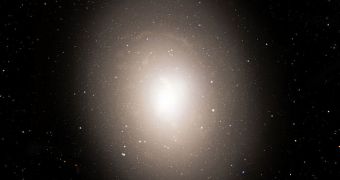In a finding that could have considerable implications on the number of exoplanets potentially harboring life forms, researchers determined in a new study that there could be three times more stars in the Universe that initially calculated.
The conclusions belong to astronomers who found out that members of a common star called red dwarfs may in fact be a lot more common than anyone suspected. The number may be significant enough to force a recalculation of the Universe's star content.
As such, astronomers said in a December 1 announcement, it could be that the number of potentially habitable stars has also gone up. Some of the stars we didn't previously know were there could have solar systems featuring exoplanets in their habitable zones.
As opposed to yellow dwarfs such as the Sun, red dwarfs are a lot less massive (just 10 to 20 percent of a solar mass) and also smaller and dimmer. Due to this lack of brightness, red dwarfs have only been discovered in the Milky Way in the Local Galaxy Group.
Given that experts were unable to find them anywhere else, they have always questioned as to how many may be out there. Eventually, as technology developed, they got the tools they needed to answer these questions.
Using the powerful Hawaii-based W.M. Keck Observatory, the investigators looked at the light signatures of 8 massive elliptical galaxies, all of them located relatively close by, Space reports.
The objects were situated between 50 million and 300 million light-years away. “It is remarkable that we can measure and quantify the light of these incredibly feeble stars in galaxies outside of the Milky Way,” says Pieter van Dokkum.
The researcher and team member holds an appointment as an astronomer at the Yale University, in the United Kingdom. He says elliptical galaxies were selected for the research because they are some of the most massive structures of their kind in the Universe.
According to the new study, these galaxies may in fact contain 5 to 10 times more stars than initially seen through other telescopes. The number of stars in the Universe may therefore be triple.
But determining the exact number of stars is a tricky business, considering that we don't yet know the precise number of galaxies that are out there.
“It's this latter quantity that is quite uncertain. Nevertheless, best estimates are around 100 sextillion – a 1 with 23 zeros,” van Dokkum explains.
“Our results would then triple that number, but again, there's a large additional uncertainty associated with this estimate,” he concludes.

 14 DAY TRIAL //
14 DAY TRIAL //